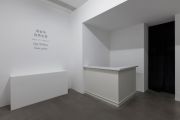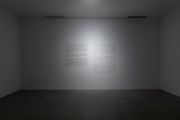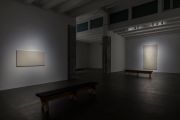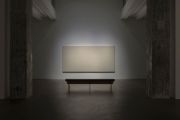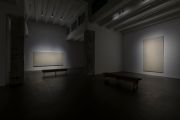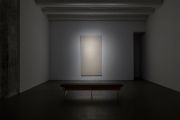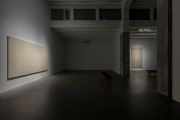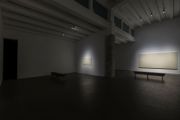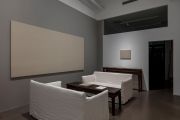Qiu Shihua
Sanctuary
November 25, 2023 - February 18, 2024
Extended to February 29, 2024
Galerie Urs Meile Beijing
Press Release - English
Qiu Shihua (b. 1940 in Zizhong, China) stands as an enigmatic figure in the world of contemporary art.
Growing up in dire poverty in southwestern China, it initially seemed unlikely that he would become a contemporary artist. Despite the external circumstances, painting became a refuge for him at a young age, initially without formal academic training. Western oil painting was a relatively new discipline in China at that time, and artistic education was exclusively ideological in nature. However, he did not have much to do with society, the system, nor educational methodology in any case, as he states. 1 In a time when art was fundamentally under state control, he found work as a theater poster artist but soon lost that job. “Society had broken with him—not the other way around” he says as he looks back. This led to his complete withdrawal from social life.
At the age of 40, he made a fresh start, with painting being the only constant. In his sense of dis- orientation, he turned to Taoism and gradually developed his current style of painting. He describes the transformation as “from extreme pain to extreme joy.” Life had been hard but simple at the same time. Once again, painting seemed to be his refuge.
In the opening environment of the 1980s, his work gradually gained international recognition. The opportunity to stay in Paris and study the Impressionists encouraged him to move away from traditional landscape painting and instead search for mental landscapes in meditation. “Looking at the landscape limits the mind,” as he says.
Towards the end of the millennium, he achieved a breakthrough, with exhibitions at the São Paolo Biennale (1996), the Venice Biennale (1999), and the Kunsthalle Basel (1999) bringing international acclaim.
In the 2010s, he faced years of a severe illness that did not improve despite treatment with Western medicine and severe side effects. After years of pain, he decided to discontinue all treatments and dedicate his (presumed) remaining time solely to meditation and painting. Once again, painting remained his last refuge, and contrary to doctors’ predictions, it became his place of healing.
What followed were exhibitions at major institutions in Europe and the US such as Hamburger Bahnhof, Berlin, Germany (2012), the Metropolitan Museum of Art, New York, USA (2013) or the Museum Rietberg, Zurich, Switzerland (2020).
Qiu Shihua’s paintings are not to be understood in the traditional sense of the word. They are a reflection of his life experiences, a product of his deep meditation, and a refuge from the struggles that have marked his existence. His exhibitions became a pilgrimage rather than a typical art show, as the con- ventional methods of digital distribution and presentation simply do not align with his unique approach. In a world increasingly influenced by market-driven art production and streamlined art education, Qiu Shi- hua’s work stands as a symbol of detachment from these trends and serves as a reminder of the enduring power of art as a sanctuary. His paintings challenge our perceptions and beckon us to contemplate a differ- ent dimension of art—one that transcends time, defies classification, and ultimately becomes a refuge for the artist and the audience alike. His legacy lies in his unwavering commitment to the original idea of art as a refuge, even in a contemporary world presumably detached from its roots.
To this day, Qiu Shihua dedicates his time to painting, dividing it between Shenzhen and Sacra- mento.
________________
1 All statements of the artist are from an interview with Kurt Aeschbacher on Qiu Shihua’s exhibition “White Field” at Hamburger Bahnhof, Berlin, Germany, 2012.
Exhibition Views

